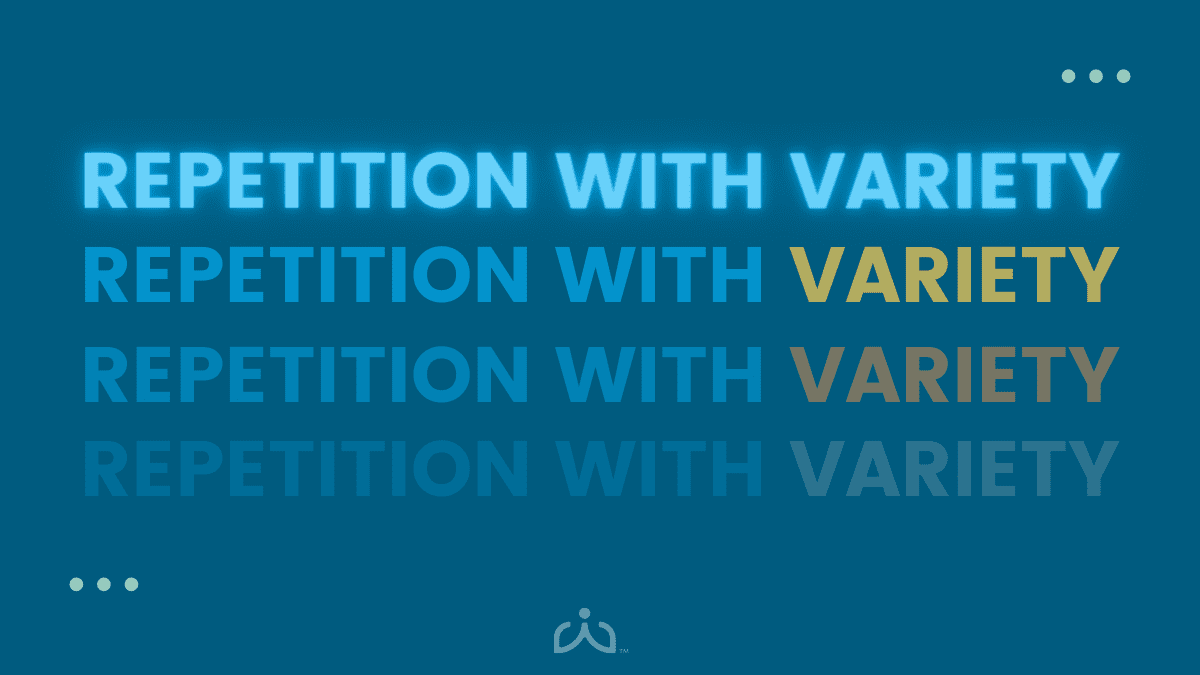Repetition with Variety:
An Element of Literacy Instruction
for Learners with Significant Disabilities
Imagine having one of the best serves in tennis. You can hit ace after ace because you worked hard to refine your technique. But what happens when it’s your turn to receive? Without a solid all-around game, you’d be lucky to win a match.
Skill mastery is limiting when focusing on concepts in isolation. In the example of tennis, it will make you good at serving rather than good at tennis. In the example of literacy instruction in special education, it most often produces kids who can identify words from a list, rather than read with comprehension. Being a good reader or tennis player requires the juggling or integration of multiple skills, abilities, and understandings all at once.

Mastering Skills over Time Using Repetition with Variety
Dr. Karen Erickson reminds us that literacy learning does not occur without repetition with variety and having an approach that provides comprehensive literacy strategies: “Children don’t first master phonics and then improve their fluency, for example. They master skills over time; not before they move on, but as a result of moving on,” she explains. We see this principle used in learning when we encourage students to apply skills across contexts and to revisit previously learned material. Repetition strengthens muscle memory and variety helps learners generalize learning across contexts. Together, repetition with variety is a key component of growth and helps improve student outcomes.
Building a Foundation through Repetition
Literacy learning does not entail mastering a series of sequential skills. Instead, learners develop critical thinking through accumulated and diverse experiences centered on reading and writing. Giving them opportunities to read a variety of content helps drive communication and reading skills. For example, a class may read a story together on Monday, draw a scene from the story on Tuesday, act out the story on Wednesday, talk about the main character on Thursday, and write a summary of the story on Friday. By revisiting the same material in different ways, students strengthen their comprehension and their ability to discuss the literature.
Repetition with Variety within Readtopia and ReadtopiaGO
Variety with repetition is foundational within Readtopia for late elementary, middle school, and high school students and within ReadtopiaGO for early learners in Pre-K through grade two. This approach provides comprehensive literacy instruction across several domains of study including ELA, math, social studies, life skills, and science. Both teachers and students benefit from this reiteration. Teachers become more effective at delivering evidence-based instruction, and students benefit from using a familiar curriculum between grade-levels and between elementary, middle and high schools within a school district.
Repetition with Variety within Specific Readtopia Units
Building Wings Solutions Specialist Kimberly Jackson-Betke often uses an example to illustrate that Readtopia offers learners many opportunities to learn material related to state standards and strengthen literacy skills. For example, in the “Empathy, Grit, and Kindness” Readtopia unit, anchored in the text Anne of Green Gables, students build their literature comprehension by following a series of lessons that use repetition with variety to encourage a return to the text with a different lens each time.
Students obtain background knowledge and become familiar with the story initially through video before hearing the story read by the teacher at the highest conventional level. Subsequent literature comprehension and close reading lessons include instruction involving:
- Multiple forms of comparison between points of view, character descriptions, and physical descriptions
- Retelling the story using details, such as examples with a similar theme or central idea, in the order that they are presented
By repeatedly engaging with the text in a variety of ways, students stay engaged in the material while strengthening their skills and solidifying their progress. In the teacher guide that accompanies every Readtopia unit, teachers can see how skills are repeated across all the lessons in the unit on every content area topic: math, science, social studies, and social and emotional skills.
Comprehensive Literacy for All
Generalizing and Integrating Skills and Standards
Providing repetition with variety to ensure you are meeting multiple standards in an integrated and meaningful manner. With Building Wings, we stack standards with a unique approach. When teaching literacy, aim to leverage academic and daily routines throughout the school day.
When you use this comprehensive approach, you will find that students achieve learning gains that meet multiple standards. When you “stack” the standards, you meet multiple standards with every thematic unit instead of working on a single standard until the student masters that one standard. Like the tennis player mentioned at the beginning of this article, a good learner never stops learning and needs to learn skills and concepts in multiple contexts.

